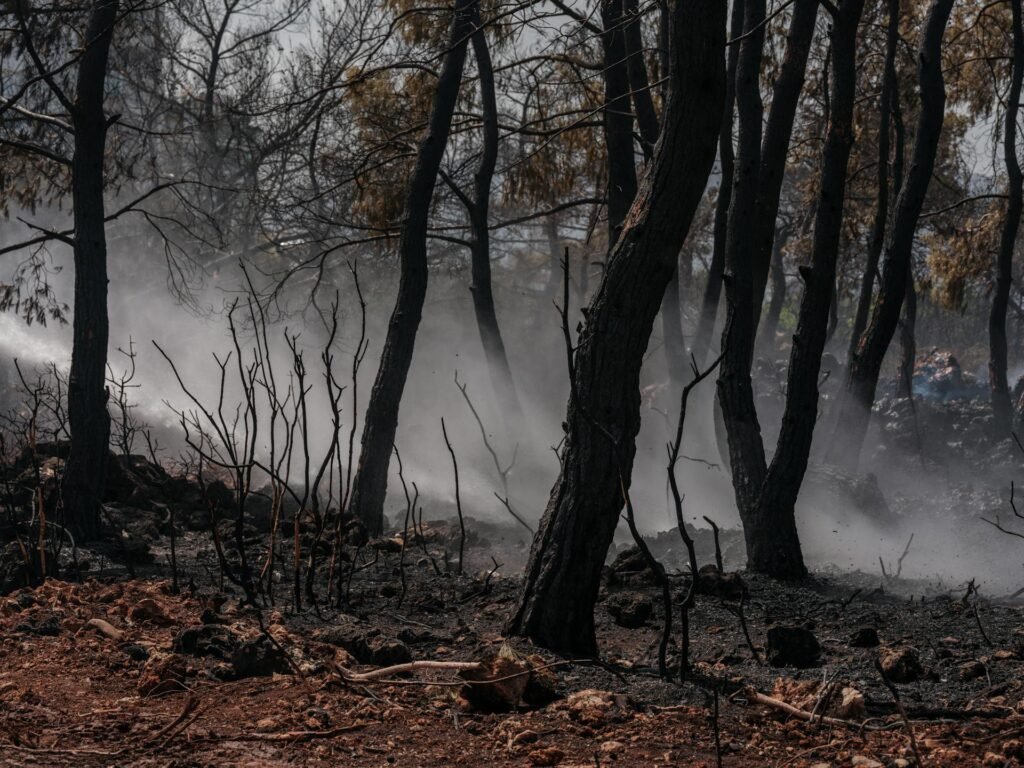
Los Angeles is battling a dual threat in the wake of recent rains—a significant flash flood risk and a more insidious danger: toxic ash. While the rains brought relief to the drought-stricken city, they also unleashed widespread chaos in wildfire-scorched regions. Streets were flooded, hillsides collapsed into debris flows, and, most alarmingly, toxic ash from burned structures and vegetation began spreading, posing serious risks to residents’ health and safety.
This growing concern has left residents grappling with questions about the long-term impact of toxic ash and how to navigate the immediate dangers posed by unpredictable weather patterns.
Heavy Rains Uncover a New Danger
Over the past few days, Los Angeles experienced intense rainfall, with some areas receiving over an inch of precipitation. For a city with a history of wildfires, these rains are a mixed blessing. While they help to reduce the risk of new fires, they also destabilize the dry, scorched earth in burn zones, causing flash floods and mudslides.
Mudslides tore through neighborhoods near wildfire-affected zones, sweeping away cars, damaging infrastructure, and forcing temporary road closures. While officials worked tirelessly to mitigate the damage, the rainwater carried toxic ash into storm drains, rivers, and even residential areas, compounding the challenges residents faced.
What Makes Toxic Ash So Dangerous?
Toxic ash is a byproduct of wildfires, and it’s far more harmful than it appears. It’s not just burnt wood or vegetation; it often contains:
- Heavy Metals: Lead, arsenic, and mercury from burned structures and household items.
- Asbestos: Released when older buildings are destroyed.
- Synthetic Chemicals: Plastics, paints, and electronics add harmful compounds to the mix.
When the rain mixes with this ash, it creates a hazardous slurry that can seep into homes, contaminate water supplies, and become airborne when dried. This makes toxic ash a silent yet potent threat to communities recovering from wildfires.

Also Read: The Silent Victims of LA Fires: Animals at Risk!
The Human Cost of Toxic Ash
The aftermath of the recent rainfall has exposed thousands of residents to toxic ash. Reports indicate that over 50,000 people live in areas where ash exposure is particularly high, with hundreds already seeking medical attention. Common health complaints include:
- Respiratory Issues: Coughing, wheezing, and aggravated asthma.
- Skin Problems: Rashes and irritation from contact with ash-laden water.
- Long-Term Risks: Prolonged exposure to carcinogens found in toxic ash could lead to serious health conditions.
Children, the elderly, and those with pre-existing health conditions are especially vulnerable. Local health officials are urging residents to take precautions and avoid direct contact with ash-contaminated water and surfaces.
Are Flash Floods Still a Threat?
Flash floods remain a pressing concern for Los Angeles, particularly in areas scarred by wildfires. The hardened, hydrophobic soil in these regions prevents water from soaking in, causing rapid runoff during heavy rains. Although immediate flood risks have diminished since the last rainfall, future storms could trigger similar conditions.
Emergency services are on high alert, particularly in neighborhoods near burn scars, where debris flows are more likely. Residents in these areas are being urged to have evacuation plans ready and to stay updated on weather alerts.
How to Stay Safe Amid Toxic Ash and Flood Risks
Residents can take steps to minimize their exposure to toxic ash and prepare for potential flash floods:
- Wear Protective Gear: Use N95 masks, gloves, and long-sleeved clothing during cleanup efforts to avoid contact with ash.
- Wet the Ash: Spray water over ash before cleaning to prevent it from becoming airborne.
- Monitor Water Quality: Avoid using tap water if contamination is suspected and stay informed about advisories.
- Stay Prepared for Floods: Keep emergency kits ready and avoid driving through flooded areas.
A Path to Resilience
Los Angeles stands at a critical crossroads, grappling with the devastating aftermath of recent torrential rains and the hidden dangers of toxic ash. The city faces a dual crisis: cleaning up wildfire residue that poses health risks and addressing the vulnerabilities exposed by flash floods. This is more than just a recovery effort—it’s a fight to safeguard the city’s future.
The contamination left by toxic ash has seeped into the environment, threatening air quality, soil, and water. Simultaneously, the rains have overwhelmed flood-prone areas, exposing infrastructure gaps and leaving communities at risk. For Los Angeles, these challenges are not just a wake-up call but an urgent opportunity to redefine resilience.